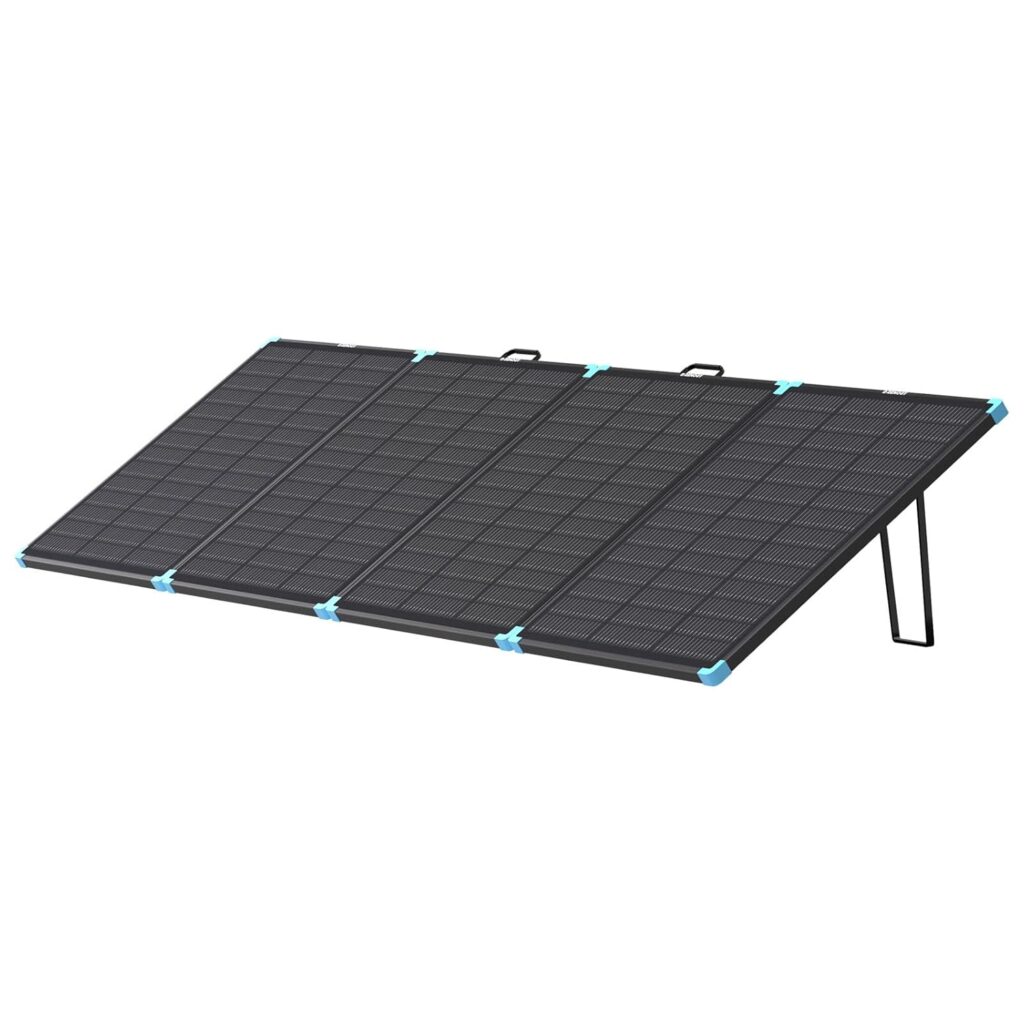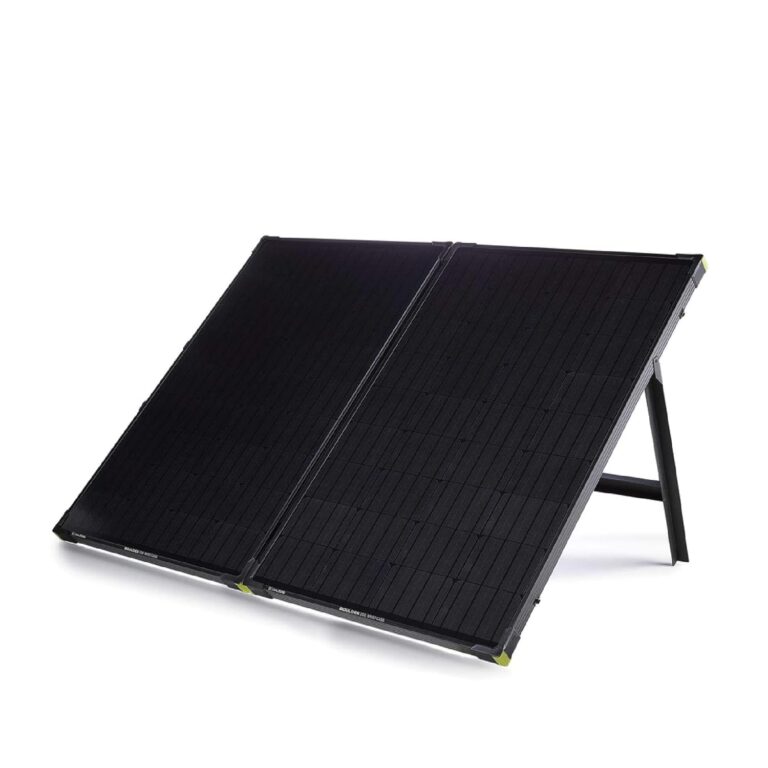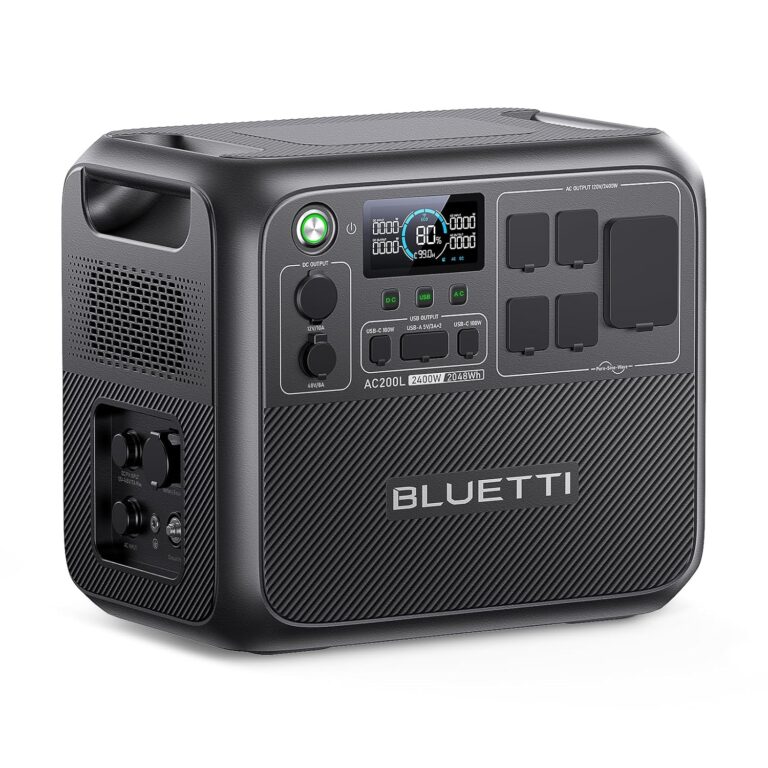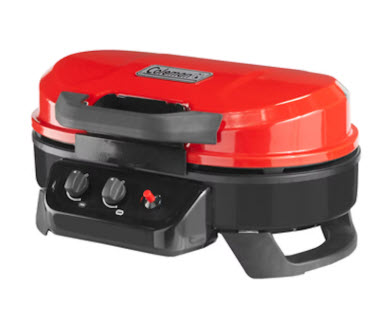Best Solar Panels for RVs (2025 Update): Stay Powered, Camp Longer!
Ditch the Generator! Our experts tested the top 5 RV solar panels for real camping life-focusing on what works, what lasts, and what’s easy to install.
So, you want to escape the crowds, park by the lake, and keep your coffee maker brewing without hunting for an electric hookup? That’s the dream of RV life, and the secret weapon is solar power.
But let’s be honest: looking up “RV solar panels” brings up a ton of confusing tech talk. Watts, MPPT, Monocrystalline… who has time for all that?
We did! Our team spent months living in our RVs, wrestling with panels, watching the meters run, and testing gear in real-world sun, dust, and rain. We boiled everything down to what matters most: Which panels actually keep you powered up when you need it most?
This guide cuts through the noise. We’ll show you the Top 5 RV Solar Panels for 2025 in plain English, tell you exactly what you need to know, and explain why you should finally ditch that noisy generator.
💡 Solar Power for Regular Folks: What You Really Need to Know
Forget the fancy math. Here are the three things you need to understand before you spend a dime.
1. Panel Quality: Stick to the Good Stuff
Not all panels are made equal. For RVs, you want Monocrystalline panels. Think of it like this:
- Monocrystalline (Mono): These are the smart choice. They squeeze more power out of a smaller space. Since your RV roof is tiny, you want the most juice from every square inch. They handle heat and low light better than the cheaper stuff.
- Polycrystalline (Poly): Cheaper, but weaker. They take up too much precious roof space for the power they give. Skip these for your RV.
2. Power Check: How Many Watts Do You REALLY Need?
This is where most people mess up. They buy a 100W panel and wonder why their batteries die after one cloudy night. You need to know what you run:
| What Do You Run? | Quick Rule of Thumb |
| Light Use (Weekend trips, lights only) | 200W – 300W total |
| Medium Use (Fridge on 24/7, some laptop time) | 400W – 600W total (The Sweet Spot) |
| Full-Time Living (Fridge, Starlink, maybe an AC boost) | 800W+ total |
Simple Math Example: If your fridge runs all day (it uses a lot!) and you charge a few phones, you likely need about 400 Watts of solar panels to keep up on a sunny day. Always get a little more than you think you need!
3. The Brains: The Charge Controller (MUST BE MPPT)
This little box sits between your panels and your battery. It’s the traffic cop for electricity.
- MPPT (Maximum Power Point Tracking): This is the mandatory upgrade for any system over 200W. It’s smarter. It grabs every last drop of power the sun offers, especially when it’s cloudy or when the sun is low in the sky. It can give you up to 30% more usable power than the cheap version.
- PWM (The Cheap One): Only good for tiny, basic 100W portable setups. If you are putting panels on your roof, get MPPT.
🏆 Our Top 5 Best RV Solar Panels for Real Campers (2025)
We tested ease of setup, how well they survived being driven on a bumpy highway, and, most importantly, how much juice they actually made on a cloudy day.
1. Renogy 400-Watt Monocrystalline Kit – The Go-To Choice for Most RVers
This kit is the champion because it makes getting started easy and effective. It’s not the absolute cheapest, but it’s the best value.

- Why We Love It: It comes as a full package-four tough 100W panels, all the cables, and crucially, a high-quality 40 Amp MPPT Charge Controller. You don’t have to guess which parts work together!
- Real-World Power: On a standard sunny day, this 400W setup reliably kept our fridge running, charged two big batteries, and handled basic fan use without breaking a sweat.
- Toughness Factor: The aluminum frame is solid. We drove hundreds of miles on rough roads, and the panels stayed tight and ready to work.
Bottom Line: If you are new to solar or just want a system that works right out of the box without hunting for missing pieces, the Renogy 400W Kit is the winner for 2025.
2. Victron Energy Rigid Panels (Add-On) – The Pro-Level Powerhouse
Victron doesn’t sell simple “kits”-they sell professional power gear. People who live in their RVs full-time often choose Victron because it’s known for being bombproof.
- Why We Love It: These panels boast an incredible 22.2% efficiency. That means if you have limited roof space, you get the absolute most power possible. They also handle heat like champs-they don’t lose as much power when the roof gets blazing hot.
- The System: You pair this panel with a Victron MPPT controller and a Victron battery monitor. The whole system talks to each other, letting you see exactly what’s happening on your phone.
- Toughness Factor: These are built like tanks, often used on commercial boats and work vehicles. They will likely outlast your RV.
Bottom Line: If you are a full-timer, have the budget, and want a system that’s reliable down to the last percentage point, Victron is the top-tier choice.
3. BougeRV 300W N-Type Bifacial Panel – The “Extra Power” Panel
This one is for the tech-curious RVer who wants to squeeze every last drop out of the sun.
- What is Bifacial? It means the panel can catch sunlight hitting the front AND light bouncing off your roof hitting the back. It’s like having two panels in one!
- Real-World Power: When mounted a few inches above a white roof, we saw an extra 15-20% power gain compared to a regular panel the same size, especially in the morning and late afternoon.
- Durability Note: These panels are built with newer N-Type cells, which are supposed to last longer than the older style.
Bottom Line: If you have a big, flat, white roof, this is a fantastic way to get more power without adding more panels.
4. Go Power! 200-Watt Portable Solar Kit – Best for Shaded Parking
Not all parking spots are sunny. Sometimes you want the cool shade of a big pine tree, but your solar panels are stuck on the roof under that same tree!
- Why We Love It: This is a fold-up suitcase of solar power. It weighs about 28 lbs, folds up small, and comes with its own controller and cables. You just unfold it, point it at the sun, and plug it into your RV battery connection.
- Flexibility: You can park your RV in the shade and place this panel 20 feet away in the sun. Total freedom!
- Toughness Factor: It comes in a heavy-duty nylon bag and is designed to be moved daily.
Bottom Line: Perfect for those who only camp on weekends, have a small roof, or want a backup power source to deploy when a storm rolls in and stops the roof panels from working.
5. Solmax 150W Flexible Panel – Best for Hard-to-Fit RVs
If your RV has a curved roof (common on older trailers or custom vans), a heavy, rigid panel just won’t sit right.
- What It Is: These panels are thin, light, and can actually bend a little without breaking. They often stick right onto the roof with super-strong adhesive.
- The Trade-Off: They are usually less efficient (about 17-18%) than the rigid ones, and they run hotter because they sit flat on the roof with no air gap to cool them.
- Weight Savings: They weigh next to nothing compared to a rigid panel, which is great for older campers.
Bottom Line: If your roof is curved, or if you absolutely cannot add the weight or height of a rigid panel, this is your best, neatest option.
🛠️ Staying Powered: Making Sure Your RV Solar Panels Last
Getting the panels is only half the battle. Here’s how to make sure they work hard for you for years.
1. The Battery Rule: Lithium or Nothing
If you invest in great panels, don’t cheap out on the batteries. LiFePO4 (Lithium Iron Phosphate) batteries are the standard now. They are lighter, last 5 to 10 times longer than old lead-acid batteries, and you can use almost all their power without hurting them. A 400W solar system paired with a quality 200Ah LiFePO4 battery will give you days of power, even without sun.
2. Cleanliness is Next to Godliness (or Power)
Dust, bird droppings, and pollen are your solar panels’ worst enemies. A layer of grime can reduce your output by 10-15% easily!
- Simple Tip: When you stop for the day, take a soft cloth or squeegee and some simple water, and wipe down the panels. It takes two minutes and keeps your power production high.
3. Protecting Your Investment
Your solar panels need to survive the road. Make sure your installer uses:
- Proper Mounting: For rigid panels, use Z-brackets or tilt mounts to lift them 1-2 inches off the roof. Airflow keeps them cool and efficient.
- Quality Wiring: Use UV-resistant solar cables. Cheap cables get brittle in the sun and can short out. Good kits (like Renogy) provide these.
🎯 Final Verdict: Powering Your Next Adventure
The best RV solar panels for 2025 are those that fit your lifestyle and your budget without sacrificing necessary efficiency.
- If you are ready to go off-grid seriously: Get a 400W+ Monocrystalline Rigid System paired with an MPPT controller and LiFePO4 batteries.
- If you are a casual user or have roof issues: A high-quality 200W Portable Kit or a Flexible Panel is a fantastic, versatile solution.
Stop worrying about running out of power. With the right gear, the best campsites are always within reach.




